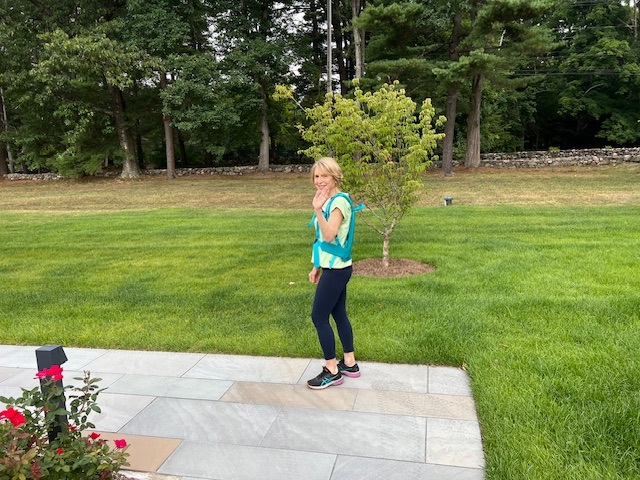
Posted on August 03, 2024
When we consider how to allocate exercise time, aerobic routines like walking and running come to mind easily. Their benefits for heart health, stamina and calorie burning are well known. When we add strengthening exercises, we see the difference in our muscles and our ability to lift heavier loads.
What we often overlook is our bones. Out of sight as they are, bones tend to be out of mind, too, until they are fractured or brought to our attention through a bone density scan. Then we might add exercises for balance and stability and use extra caution when we move. But avoiding injury is not all we should do for our bones. We need to work at actively building strong bones, and this is important for everyone, regardless of age or gender, even if you are not at high risk for osteoporosis.
As I’ve boned up on bone health and talked with my trainer, Marc DesLauriers, I’ve come to understand that our bones do much more than provide a framework for our bodies. They also protect our organs, anchor our muscles and store essential minerals like calcium. I hadn’t previously thought of bone as living tissue, but that’s what it is, and like other body tissues, bone breaks down and rebuilds all the time throughout our lives. Aging, heredity, nutrition, medical conditions and exercise can all affect this process.
Although I had done strength training in various forms, I hadn’t fully realized that as we build muscle, we also build bone. This is because stronger muscles pull harder on bones; the stronger the pull, the more the bones are strengthened. But only the bones that bear the load of a particular exercise benefit from it. Upper body exercises, for example, don’t do much for bones in the lower body.
Having learned this much, I wanted some at-home exercises that would especially benefit my bones, particularly those in the core, hips and spine. Keeping in mind my physical condition, Marc recommended several, including squats, lunges, burpees and the farmer’s carry, all of which can be adjusted to various levels of difficulty. As I performed these moves, I imagined my bones thanking me.
I had become aware of the growing popularity of rucking, walking with a weighted backpack, but had never tried it. Before the Boston Marathon, a school near me hosted Tough Ruck 26.2 Boston, an event in which military members, first responders and civilians travel the marathon route wearing heavy packs to honor fallen service members, police, firefighters and EMTs. I was fascinated by what I saw. While I knew I couldn’t carry as heavy a load or travel as far as these ruckers did, I wanted to do something similar. Its appeal was the potential to strengthen the muscles in my torso and lower body while also strengthening my bones, increasing my bone density and providing a cardiovascular workout – a package deal.
The first challenge was finding well-fitting gear. A traditional backpack would, I feared, hang too low, and the weights would have too much room to shift. After some searching, I ordered the Jetti pack. When I adjusted the padded shoulder straps and the chest and waist straps, it fit snugly. I could tell that the weight plate was securely in place and wouldn’t move.
Carrying only the 7-pound “starter” plate my pack came with, I expected this would be easy, but it wasn’t initially. My first time out, I walked briskly for 30 minutes and felt my lower body muscles working extra hard. I could feel my abdominal muscles engage to help support my pack and my shoulders move back into better alignment with my body. It soon became easier, and I added an additional weight plate. I’m now considering poles to engage my upper body, especially on hilly hikes. I’ve enjoyed rucking so much that I do it indoors on very hot days.
Like all other exercise, rucking is not without risk and needs to be approached thoughtfully, according to your physical condition and experience level. Consult with your healthcare provider if you have any health conditions or concerns. Pick a well-fitting pack with good padding and weight distribution. Start low, carrying only 5-10% of your body weight. Keep your early walks short. You can gradually add weight, distance and frequency.
Rucking may or may not suit you, but you don’t need a pack on your back to give yourself a pat on the back whenever you engage in exercise that strengthens your bones.